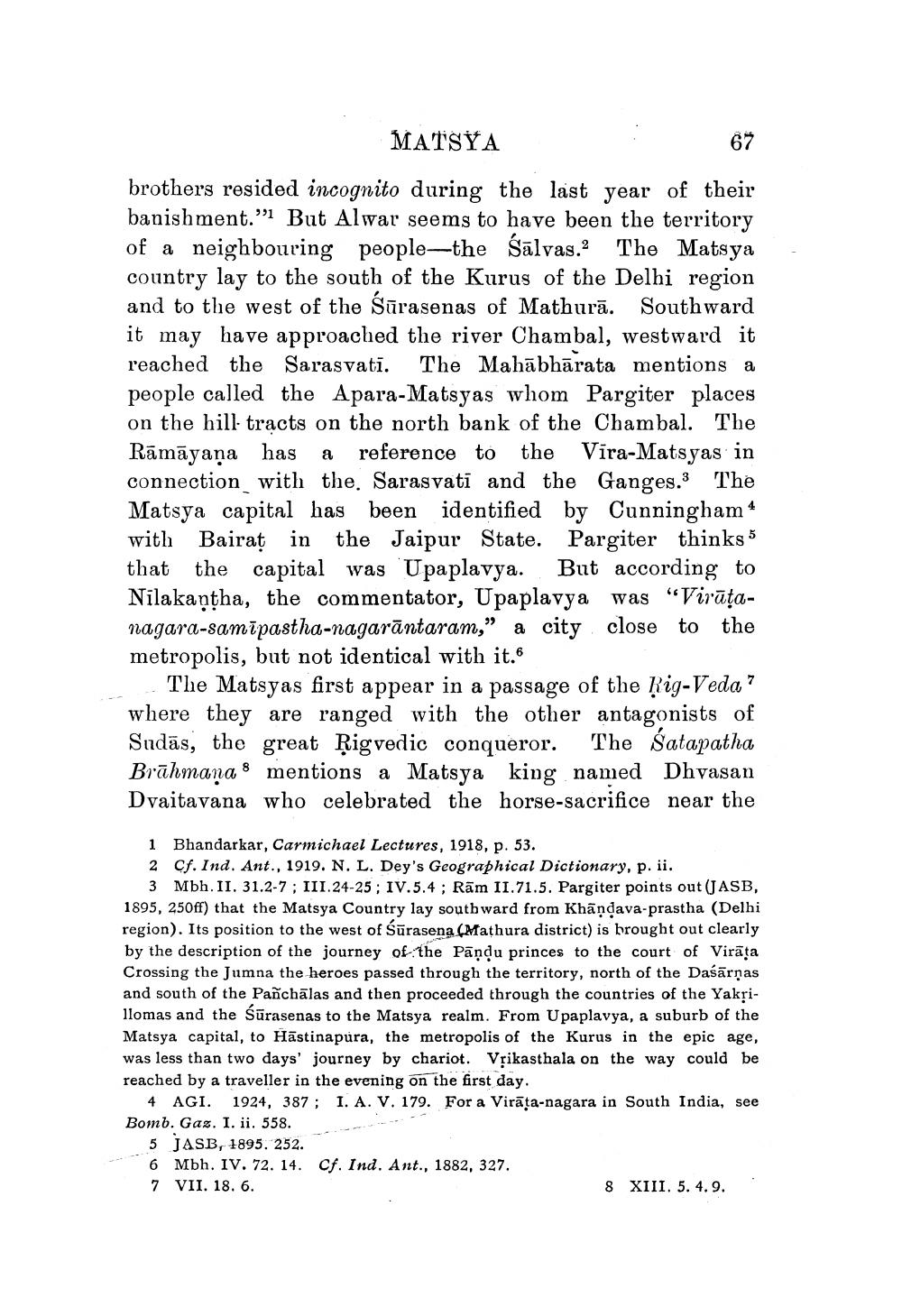________________
MATSYA
67
brothers resided incognito during the last year of their banishment." But Alwar seems to have been the territory of a neighbouring people—the Sālvas.2 The Matsya country lay to the south of the Kurus of the Delhi region and to the west of the Śūrasenas of Mathurā. Southward it may have approached the river Chambal, westward it reached the Sarasvati. The Mahābhārata mentions a people called the Apara-Matsyas whom Pargiter places on the hill-tracts on the north bank of the Chambal. The Rāmāyaṇa has a reference to the Vira-Matsyas in connection with the. Sarasvati and the Ganges. The Matsya capital has been identified by Cunningham * with Bairat in the Jaipur State. Pargiter thinks : that the capital was Upaplavya. But according to Nilakantha, the commentator, Upaplavya was “Virātanagara-samīpastha-nagarāntaram," a city close to the metropolis, but not identical with it.
The Matsyas first appear in a passage of the ħig-Veda? where they are ranged with the other antagonists of Sudās, the great Rigvedic conqueror. The Satapatha Brāhmana' mentions a Matsya king named Dhvasan Dvaitavana who celebrated the horse-sacrifice near the
1 Bhandarkar, Carmichael Lectures, 1918, p. 53. 2 Cf. Ind. Ant., 1919. N. L. Dey's Geographical Dictionary, p. ii.
3 Mbh. II. 31.2-7 ; III.24-25; IV.5.4 ; Rām 11.71.5. Pargiter points out (JASB, 1895, 250ff) that the Matsya Country lay south ward from Khāndava-prastha (Delhi region). Its position to the west of Śūrasena (Mathura district) is brought out clearly by the description of the journey of the Pāņdu princes to the court of Virāta Crossing the Jumna the heroes passed through the territory, north of the Daśārņas and south of the Panchālas and then proceeded through the countries of the Yaksillomas and the Sūrasenas to the Matsya realm. From Upaplavya, a suburb of the Matsya capital, to Hastinapura, the metropolis of the Kurus in the epic age, was less than two days' journey by chariot. Vţikasthala on the way could be reached by a traveller in the evening on the first day.
4 AGI. 1924, 387; 1. A. V. 179. For a Virata-nagara in South India, see Bomb. Gaz. I. ii. 558.
5 JASB, 1895. 252. 6 Mbh. IV. 72. 14. Cf. Ind. Ant., 1882, 327. 7 VII. 18. 6.
8 XIII. 5. 4.9.




